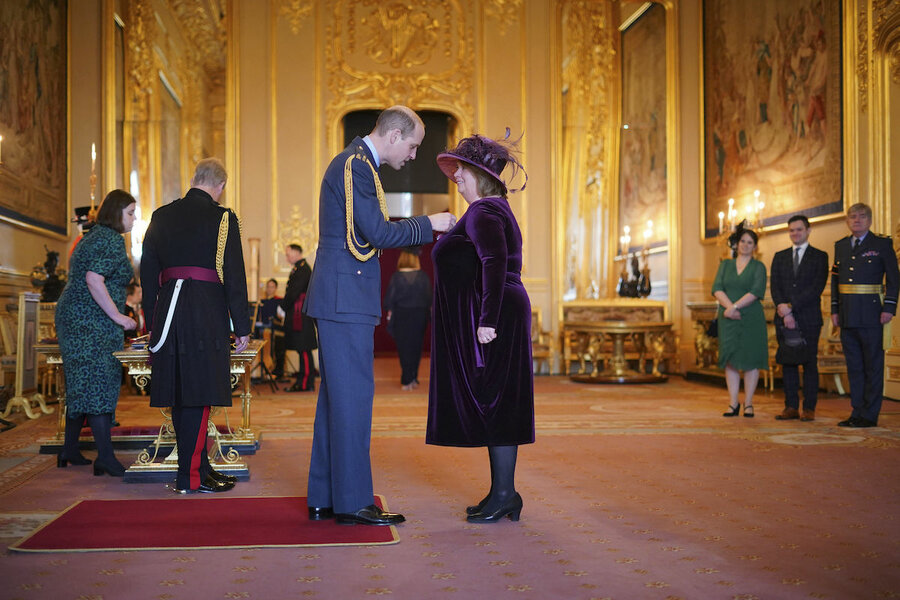Prince William returns to public duty in trying time for the Windsors
Loading...
| London
Prince William, the heir to the throne, returned to royal duties Feb. 7. He performed an investiture ceremony at Windsor Castle and is attending a fundraising dinner for London’s Air Ambulance Charity on Feb. 7.
The prince temporarily retreated from public-facing duties to help care for his wife Kate Middleton, Princess of Wales, who was hospitalized for abdominal surgery, and their children. It was William’s first public appearance since his father King Charles III announced his cancer diagnosis this week. Charles is stepping back from his task of being among his subjects to focus on his health. Kate isn’t expected to resume public duties until April. The palace was careful to note that Charles will continue to manage other duties of state.
Charles was seen in public for the first time since his diagnosis on Feb. 6, when he left his offices at Clarence House after a brief reunion with his younger son, Prince Harry who flew more than 5,000 miles to see his father on Feb. 6. Harry did not see his estranged brother, William, during a visit that lasted scarcely 24 hours.
Charles took the throne intending to preside over a slimmer monarchy with fewer senior royals carrying out ceremonial public duties. But with Charles and Kate both temporarily sidelined, Harry self-exiled to California, and Prince Andrew largely banished from view because of his friendship with sex offender Jeffrey Epstein, the royal “Firm” risks becoming severely overstretched.
What are the monarch’s duties?
Charles’s most visible role as monarch is at the annual State Opening of Parliament, where the monarch sets out the government’s agenda in a formal address. The speech is written by the government and contains a summary of the legislation proposed for the forthcoming parliamentary session.
The monarch also gives royal assent to bills passed by Parliament, meaning that all legislation must receive his sign-off to become law. He or she plays a similar part in appointing new prime ministers and Cabinet members.
The monarch also holds a weekly private audience with the prime minister and can express political opinions during it, but what is said must remain behind closed doors. The meetings, which usually take place on Wednesdays at Buckingham Palace, are expected to continue during Charles’ outpatient treatment, although they may take place remotely.
The palace has said the king will also continue receiving stacks of important government documents, which are traditionally delivered daily in a red leather box, and chairing monthly meetings of the Privy Council.
The council, which served as the original executive arm of the government in England, today advises the king on giving his formal approval of orders that were vetted by government officials, including on matters such as issuing coins and setting up new government departments.
Palace officials say that while the king plans to continue with state business and official paperwork during his treatment, he is stepping back from the hundreds of public engagements he carries out each year.
In addition to the widely publicized pomp and ceremony of royal processions and state visits, the Windsors attend hundreds of little-known events every year to recognize the accomplishments of ordinary people and mark local events such as the opening of libraries and community centers. Hundreds of charities cherish royal appearances, which give their good works visibility and credibility among potential donors.
Another of the monarch’s visible duties as head of state is hosting world leaders during their visits to the U.K. Beyond that, the king is expected to serve as a symbol of national identity, unity, and continuity.
This story was reported by The Associated Press.





